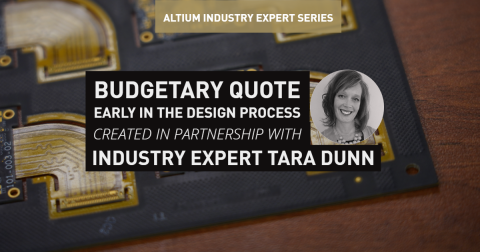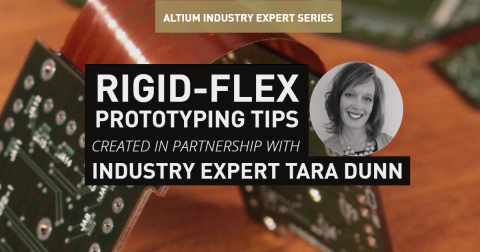Introduction of 3D Technology in PCBs: 3D Printing and PCB Design
Early experimental jets from the design table to wind tunnel tests of models to actual piloted flight at a rapid rate. During the 1950s, aircraft designers relied on slide rules and blackboard mathematics rather than computer processing and virtual simulations. When a test pilot climbed into a cockpit, he climbed into an untested prototype. Some flights went very well and set speed and altitude records, while other flights… didn’t.
As with experimental flight, PCB prototyping has changed from the type of prototyping that we saw ten years ago. PCB prototypes have progressed from clay models and one-off samples to additive and subtractive manufacturing technologies that test the appearance and alignment of a completed part. However, the process of producing a PCB prototype still requires milling, drilling, film transfer, plating, and etching.
Prototyping may take another turn with the convergence of PCB design and 3D printing.
The advantages seen with 3D printing occur through an integrated approach to the mechanical and the PCB design processes. On the mechanical side, you can establish the physical parameters of the board. This convergence becomes possible with design development in 3D-Cad software and the output of a 3D step file of the completed PCB.
PCB Prototyping and 3D Printing
A 3D printed model of the PCB can show attachment points for the board. At the same time, the PCB design team can consider the physical layout of components. The ability to look at the PCB from the X, Y and Z axes allows you to see how parts fit into an enclosure.
In addition, the 3D printed prototype can show that connection points align with the parts. Having a 3D model of the PCB also assists with the layout. You can see the distance between the traces and the complexity of the layout. All this accelerates the PCB development cycle by cutting the time needed for layout and limiting changes to the circuit board. Accelerating development also decreases the time-to-market for new products.
3D Printing for Manufacturing
The early experimental planes fly in museums now. We will always look at the pilots of those planes as legends and pioneers. Yet, their work and the introduction of the different fuselage and wing designs, distinctive control methods, and breakthrough engine technologies continue to influence aircraft and aerospace design. Another level of integration could push 3D printed PCBs past the prototype stage.
Combining enhanced 3D technologies—such as stereolithography (SL) and fused disposition modeling (FDM) offers the potential for fabricating a dielectric substrate and embedding conductors. Introduced during the 1990s, stereolithography scans a UV-sensitive liquid resin with a UV laser beam. As the beam scans the surface, it selectively hardens the material corresponding to a cross-section of the product and builds a 3D part from bottom to top. Stereolithography provides precise surface quality and quick production.
A 3D printer can be used creatively throughout your product development process
Widely used in 3D printers, fused disposition modeling relies on a temperature controlled head that extrudes thermoplastic material layer by layer. FDM allows the building of complex geometric shapes. In contrast to stereolithography, FDM leaves a rough surface on the 3D-printed components.
Combining and enhancing those technologies allows 3D printing to print a substrate to a required thickness with holes for vias. The technologies can use the precise printing of conductive inks or wires to build traces between components. Laser Direct Write (LDW) technologies use a laser to micro-machine the substrate for complex trace patterns and then transfer conductive material into the sub-millimeter trenches. Conductive inks transfer across the gap to form three-dimensional paths.
Because laser direct write technologies can deposit metals, dielectrics, ferrites, polymers, composites, and chemically reactive materials, LDW also establishes a fast and economical method for the digital fabrication of microelectronics and other devices. Combining LDW with another technology called ultrasonic additive manufacturing (UAM) further reinforces the capability to fabricate embedded electronic components.
Ultrasonic additive manufacturing (UAM) techniques sequentially bond metal foils together layer-by-layer through ultrasonic metal welding. Then, the process uses Computer Numerical Control (CNC) or lasers to remove material. This additive and subtractive manufacturing process produces free-form geometric shapes and the capability to thermally and mechanically bond dissimilar materials. UAM allows the embedding of circuits within protective metal.
UAM techniques can help encourage flexibility in your designs
3D Isn’t Only for Printing, try 3D Interfaces
Evaluating prototypes may also require new versions of PCB design software that move from two-dimensional views of a PCB to a 3D view. The ability to produce functional circuits that include conductive and dielectric materials with 3D technologies allows design teams to see errors early in the process, make decisions quicker, and select the best design solution.
Component placement and routing occurring in the 3D space allows designs to move beyond simple circuits. All this speeds the development cycle. The capability to translate schematic capture, simulation, and design rule testing in the 3D sphere adds to the possibility of producing validated complex circuits.
The capability to insert integrated circuits, sensors and passive devices pushes towards the 3D printing of fully-functional consumer devices. Placing silver-loaded inks within 3D printing bodes well for building multilayer PCBs in 3D. Highly accurate technologies can create complex, detailed dielectric substrates that have multiple layers of components and traces.
Looking further, integrated 3D and testing techniques will allow designers to address the mechanical side of PCB design while using circuit simulations to ensure functionality. The flexibility given through 3D printing will allow manufacturers to respond quickly to changing customer needs.
What PCB design software with advanced features and an intuitive interface can accomplish for you and your designs is keeping your options open to develop alongside the cooperative capabilities of technology. With strong design rule checking and an interactive 3D environment, you’ll be sure to get what you need with Altium Designer.
If you’d like to find our more about how to design and utilize for a 3D printing environment, talk to an expert at Altium today.










